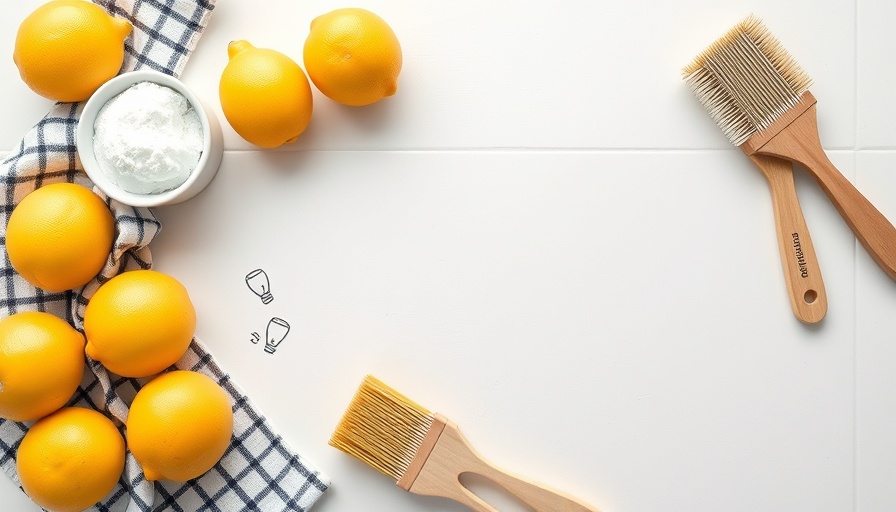
Transform Your Home Cleaning Routine with Natural Solutions
In a world where chemical cleaners dominate the market, homeowners are increasingly seeking safe and effective alternatives. Enter vinegar and baking soda—two common household ingredients that can revolutionize your cleaning routine! Not only are they inexpensive, but they also offer a green alternative to harsh chemicals, making them an excellent choice for families concerned about health and safety.
Understanding the Power of Vinegar and Baking Soda
Vinegar and baking soda are often hailed as a dynamic duo in the realm of home cleaning. Baking soda, a natural abrasive, can tackle grime and grease effectively, while vinegar’s acidic properties break down hard minerals and neutralize odors. Using both together can create a powerful cleaning reaction that releases carbon dioxide, which aids in lifting dirt away.
Mixing Vinegar and Baking Soda: A Cleaning Guide
When it comes to using vinegar and baking soda together, timing and mixture matter. If combined in equal parts, the reaction becomes a simple fizzing soda, limiting its cleaning potential. The ideal approach is to use a slightly different ratio, allowing the active ingredients to work while they are still bubbling. Here’s a step-by-step guide to using them effectively:
- General Cleaning: Mix one part white vinegar with one part water in a spray bottle.
- Spray the solution onto the surface you wish to clean and let it sit for a few minutes.
- Wipe the area clean with a soft cloth for a sparkling finish.
Heavy-Duty Solutions for Stubborn Stains
If you're confronting deeper grime or tougher stains, creating a paste from baking soda and water can work wonders. Apply the paste directly to the surface, scrub gently with a sponge, and watch as the dirt loosens. This simple approach is especially useful in kitchens and bathrooms where the hardest stains often reside.
Common Cleaning Scenarios for Vinegar and Baking Soda
These natural cleaners shine in various cleaning tasks. Here are a few household areas where vinegar and baking soda can be especially effective:
- Kitchen: Clean countertops and appliances; remove odors from the refrigerator.
- Bathroom: Unclog drains, scrub toilets, and clean mirrors without streaks.
- Laundry: Boost your laundry detergent by adding a cup of baking soda to eliminate tough odors.
Why Natural Cleaners Matter
Switching to natural cleaning solutions like vinegar and baking soda brings more than just a clean home. It fosters a healthier space free from harmful chemicals, which is especially important for families with young children or pets. Additionally, these green cleaning methods promote sustainability by reducing household waste and minimizing toxic exposure to the environment.
Addressing Common Misconceptions
Despite the growing popularity of natural cleaning methods, some homeowners remain skeptical. A common misconception is that natural cleaners are less effective than commercial products. However, numerous studies show that vinegar and baking soda are not only effective at cleaning but also safe. Moreover, they prevent the buildup of chemical residues found in many store-bought cleaners.
Your Path to a Sustainable Cleaning Routine
As you experiment with these natural cleaning methods, don’t hesitate to share your successes and challenges within your community. The shift towards using environmentally friendly solutions could inspire others to rethink their cleaning practices. Enjoy creating a safer, cleaner environment for you and your family!
Take Action! Explore the world of DIY cleaning solutions today. Embrace the change for a healthier home by making the switch to vinegar and baking soda for your cleaning needs.
 Add Row
Add Row  Add
Add 



Write A Comment